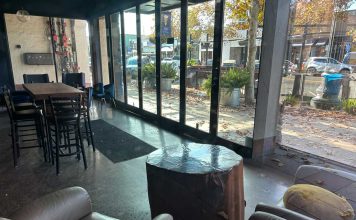So much happening in so little time. If you got excited because
the Space Shuttle Mission got back on track, or upset that one of
our famous planets was recatorized, or happy to see the rovers on
Mars get some well needed company,
So much happening in so little time. If you got excited because the Space Shuttle Mission got back on track, or upset that one of our famous planets was recatorized, or happy to see the rovers on Mars get some well needed company, pleased to see that Venus has been visited after a long time of being ignored, or just dumbfounded that we on the third planet from the sun were capable of not just sending a mission to a comet, but actually bring back home grains of material for us to examine close up in the lab, then you have to be pretty pumped up about what has gone on this last year in the field of astronomy.
What a wonderful year it was for astronomers and amateur astronomers alike. Many of the events are more exciting than others, I must admit, but who is to say which is more exciting than the other? So each year you see a list of top ten astronomical events of the past year by just about anyone who has the interest to do so, including mine. My list, of course, is my idea of what was the most important event of the year, and may not be accepted or agreed upon by anyone else. But then again that’s OK, it is my list, and I don’t think anyone is going to write a book on what my list contains.
No 10: Milky Way Satellites. Astronomers at Cambridge University in England discovered seven new satellite galaxies orbiting the Milky Way. The very first known Milky Way satellites were the large and small Magellanic clouds in the southern sky. Between 1937 and 1994 astronomers found nine more dwarf galaxies orbiting our galaxy. In May of 2006 the astronomers announced two new dwarf galaxies: Bootes and Canes Venatici, which lie 196,000 and 720,000 light-years away, respectively.
Astronomers are not sure if these objects are galaxies or just overgrown globular clusters. It makes you wonder just what else is out there for us to discover? And these new findings are fairly close to us in astronomical sense, less than 800,000 light years away. The other night I was gazing upon a group of galaxies that were over 300 to 400 million light years away.
No. 9: Discovery made its own July Fourth fireworks as it blasted to space on its third launch attempt. The near-flawless July mission of STS-121 completed NASA’s return to flight following the February 2003 Columbia tragedy. The flight cleared the way for new construction at the International Space Station (ISS) and offers the possibility that astronauts will service the ailing Hubble Space Telescope. Welcome back Discovery.
No. 8: Crashing Neutron Stars. I have to admit that I have no clue what the astronomers are talking about when it comes to this topic. But it looked pretty important so I thought it earned at least number eight on my list. With that in mind, I will have to plagiarize this part of the column from an article by Francis Reddy.
“First detected by satellite in 1967, the brief but powerful blasts of high-energy radiation known as gammaray bursts (GRBs) offered astronomers as much promise as they did puzzlement. In 2003, scientists cemented a link between bursts longer than 2 seconds and massive stars exploding as supernovae.
Shorter bursts, however, remained a mystery. But in the summer of 2005, NASAs Swift and High Energy Transient Explorer-2 (HETE-2) satellites pinpointed three short burst and cracked the case wide open. To make a short GRB, you need at least one neutron Star.”
No. 7: Hayabusa Mission. Out of nowhere, on May 9, 2003, Japan sent a mission to the asteroid 25143 Itokawa. The mission was called Hayabusa, which means “Falcon in Japanese”. Hayabusa cruised in space using xenon-fueled ion drive a new method of propulsion in space. On Sept. 12, 2005 it got into position next to the asteroid. This was to be the first spacecraft to actually land on an asteroid, collect samples, and return them back to Earth.
Hayabusa sent back stunning pictures of Itokawa, showing the surface covered with giant boulders. The largest boulder measured 160×72 feet and rises 56 feet above the surface of the asteroid.
After some difficulties, the hope is that the spacecraft picked up its intended samples and has returned on its way back to the Earth and bring back the first samples from an asteroid for scientist to examine.
No. 6: Solar Eclipse in Egypt. I know this wasn’t what you would call a new spectacular event of the year. But for the fact that my wife JoAnne and I got the chance of a life time to go see the wonders of Egypt and also see the most spectacular event I have ever seen, certainly warrants a pick in my top ten for the year.
Even my wife, who is unimpressed when it comes to astronomy, was more than excited when she witnessed the experience of a total eclipse.
No. 5: Our Return to Venus. It has been 12 years since we have sent any type of spacecraft to our neighbor Venus. But the European Space Agency’s Venus Express spacecraft is dedicated to studying the planets atmosphere.
The clouds that cover the planet are 30 miles high and travel around the equator in four days, more than 50 times faster than the rotation of the surface.
No. 4: Back to Mars again. On March 10, NASA’s Mars Reconnaissance Orbiter (MRO) entered the orbit around the Red Planet. After months of orbital adjustment, MRO set out to map the entire surface of the planet.
This mission to Mars should pave the way for any of our next robotic missions in the future. By the end of 2008 MRO will send enough gigabytes of data to fill 700 DVD’s.
No. 3: Panets Outside our Solar System. Up to date there have been more than 200 exoplanets (planets outside our Solar System) discovered. Most of the planets found are the size of Jupiter or larger.
So Swiss astronomers were excited to announce that three Neptune-mass planets were found to orbit the Sun-like star located some 42 light-years away in the constellation of Puppis.
Astronomers believe the innermost planet is most likely a rocky planet much like our own Earth.
No. 2: Stardust from a Comet. Launched in 1999, the $200 million Stardust probe was headed to capture small particles from the tail of Comet 81P/Wild 2 and bring them back to Earth.
On Jan. 2, 2004 Stardust probe passed through the tail of the Wild 2 Comet, picked up its dust particles and started its long journey back home to compete its 7-year, 2.88-billion-mile trip. On Jan. 15 the 101-pound capsule made a parachute landing at the U.S. Air Force Test and Training Range just southwest of Salt Lake City.
No. 1: What happened to Pluto? OK so this wasn’t the most spectacular event of the year, but you must admit that it stirred up more controversy than all the rest of the astronomical news in the past year.
Clear skies.
David Baumgartner is in local real estate and is an avid amateur astronomer. His Sky Watch column appears monthly.














